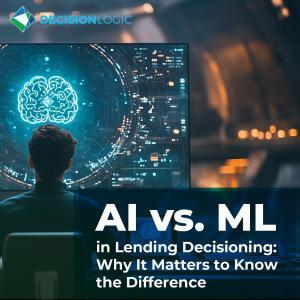
Published on 9/04/2024
AI in Lending: Are We Losing the Human Touch?
There are lots of buzz words in every industry. Those words everyone loves to hate but nevertheless they find their way into every other conversation. In comes artificial intelligence (AI). AI has been making its mark leaving few industries unsaturated, so it comes as no surprise that lending eventually fell into the technical quicksand too. AI promises to make things faster, more accurate, and more efficient, changing how lenders assess risk, approve loans, and interact with borrowers. But as AI becomes more a part of the lending process, it begs the question; Are we losing the human touch?
The Appeal of AI in Lending
In the short time since its infiltration, AI’s impact on lending has been transformative. AI in lending is not just a futuristic concept; it’s a present-day reality. From instant account verification and credit scoring to fraud detection and customer service. By automating tasks that once required human intervention, AI enables lenders to process applications faster than ever before. You must admit the benefits are quite alluring…
Enhanced Efficiency:
AI algorithms can sift through massive datasets in mere seconds, evaluating credit histories, income levels, and spending patterns to determine a borrower’s creditworthiness. This speed significantly reduces the time from application to approval, benefiting both lenders and borrowers.
Improved Accuracy:
Traditional credit scoring models often rely on a limited set of data points, which can result in incomplete or biased assessments. AI, on the other hand, can analyze a broader range of data, providing a more nuanced and comprehensive picture of a borrower’s financial health. This leads to more accurate risk assessments and better lending decisions.
Cost Savings:
Automating routine tasks with AI reduces the need for extensive manual labor, cutting down operational costs. These savings can be passed on to borrowers in the form of lower interest rates and fees.
Fraud Detection:
AI excels in pattern recognition, making it an invaluable tool for detecting fraudulent activity. By monitoring transactions and flagging suspicious behavior, AI helps protect both lenders and borrowers from fraud.
The Human Touch: What is at Stake?
Despite these advantages, there are concerns that the increased reliance on AI could erode the personal aspect of lending and reduce the number of “eyes” on an application possibly allowing good loans to fall through the cracks because they do not fit into “expected” activity.
In addition, traditionally, lending has been a relationship-driven business, where personal interactions between borrowers and loan officers played a crucial role. Borrowers would often meet with loan officers in person, discuss their needs, and build a rapport. This human interaction provided many benefits that AI cannot replicate.
Personalized Service:
Human loan officers can tailor loan products to meet the specific needs of individual borrowers. They can consider factors beyond numerical data, such as personal circumstances and future potential, which an algorithm might overlook.
Trust and Empathy:
Personal interactions build trust and rapport. Borrowers often feel more comfortable discussing their financial situations with a real person who can understand and empathize with their challenges and goals. This trust is crucial for long-term customer relationships, which creates both referrals and return customers.
Intuitive Judgment:
Experienced loan officers use their intuition, local market knowledge, seasonality, and many other non-traditional factors to make lending decisions. They can identify opportunities and risks that might not be apparent through data alone.
Striking the Right Balance
The key to addressing these concerns lies in finding a balance between AI and human interaction. Lenders should view AI as a tool to enhance human capabilities rather than replace them entirely. When used appropriately, AI can boost productivity and save costs without losing that critical human engagement.
Augment, Don’t Replace: AI should be seen as a tool to augment human capabilities, not replace them. By handling routine tasks, AI frees up time for loan officers to focus on building relationships and providing personalized advice.
Hybrid Models: Implement hybrid models where AI handles the initial stages of the lending process—such as data collection and preliminary analysis—while humans step in for the final decision-making and customer interactions.
AI in lending offers immense potential for efficiency and accuracy, but it should not come at the cost of losing the human touch. By integrating AI with human expertise, the lending industry can provide the best of both worlds: fast, accurate, and cost-effective services, coupled with personalized, empathetic customer interactions. In doing so, lenders can build stronger relationships with borrowers, fostering trust and loyalty in an increasingly digital age.


